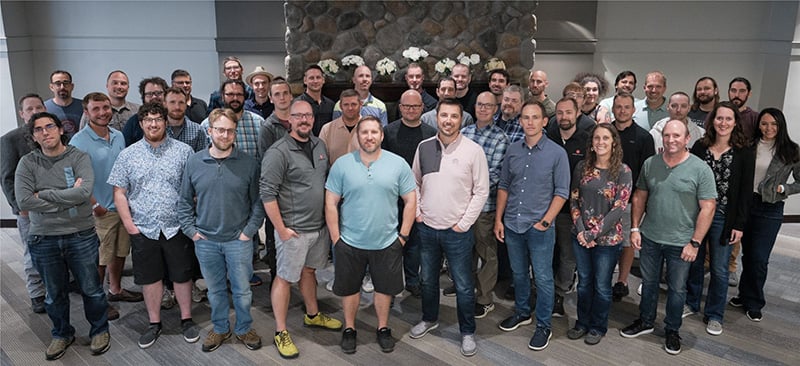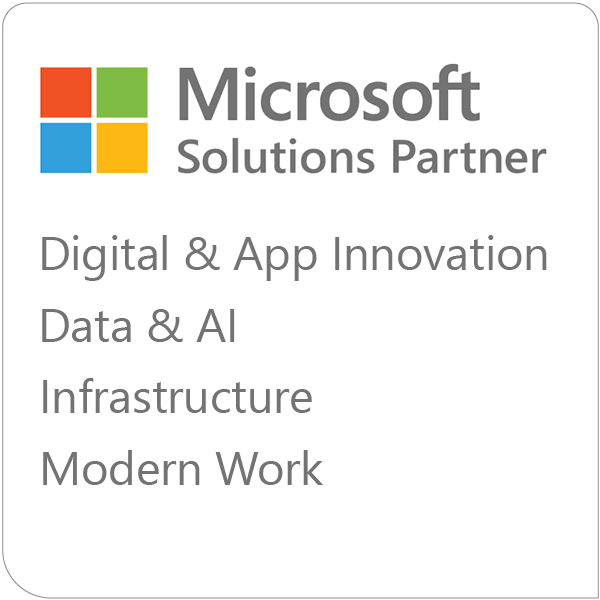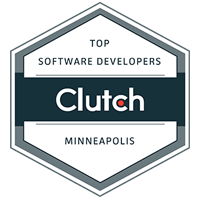Unlocking AI Capacity in the Microsoft Stack
- Microsoft’s AI Ecosystem: What It Offers and Why It Matters
- Language Services
- Document Intelligence
- Vision and Custom Vision
- AI Speech and Translator
- Azure AI Search
- Copilot, GitHub, and Day-to-Day Developer AI
- What Clients Are Asking—and What They Really Need
- Tips for Getting the Most Out of Microsoft AI
- Common Challenges to Avoid
- Final Thoughts
- Frequently Asked Questions
AI is becoming a major part of how modern software gets built. Whether it’s embedded in developer tools, powering search, or automating workflows, AI is already woven into the day-to-day of most organizations. But figuring out how to use it, how to maximize its capabilities, and what tools to trust? That’s the hard part.
I’m Aaron Trudeau, a software engineer at Emergent Software. I focus on helping clients evaluate, adopt, and optimize their use of Microsoft’s AI offerings. I work with clients daily to build real solutions, so I’m here to pass on my insights!
Microsoft’s ecosystem has grown rapidly in the AI space. In this blog, I’ll walk you through what’s available, how we’re using it, and how you can get started.
At the heart of Microsoft’s AI offering is Azure AI Services. This toolbox was created to bring powerful solutions to developers, IT teams, and business analysts alike. It’s a landscape of specialized tools designed to meet different needs.
One of the most commonly used offerings in this toolbox is Azure AI Language, which can analyze and understand text: names, places, topics, sentiment. If you’re building a chatbot, trying to extract meaning from survey data, or analyzing emails, this is the tool for you.
For example, I might have a client that has thousands of internal reports they wanted to analyze for trends. Using Azure’s prebuilt models, we could extract key phrases and entities from those reports and summarize them into something actionable.
If you’ve ever had to manually transcribe PDFs or scan receipts into an Excel sheet, you’ll appreciate Azure AI Document Intelligence. This tool uses pretrained models to pull structured data, like item names and totals, from unstructured documents like invoices or forms.
We might use this on a client project involving scanned shipping forms. By training a slightly customized model on their document format, we could automate hours of manual entry and reduce errors in the process.
Then there’s Azure AI Vision, which can identify objects in photos and video. For standard objects like cars, food, or buildings, the prebuilt model works great. But for more specific or niche use cases, Azure Custom Vision allows you to upload and label your own images, then train a model specific to your needs.
One area where Azure Custom Vision really shines is in quality assurance. Imagine a scenario in a logistics or food production facility where workers need to verify whether packaging is applied correctly, or if a product shows visible defects like dents, tears, discoloration, or incorrect labels. Instead of relying on someone to inspect the units manually, a vision model can flag anomalies in real time.
I’ve also worked with Azure AI Speech, and it’s one of the most impressive offerings in terms of raw user experience. We’re not in the days of “Please repeat that” anymore...these models are fast, accurate, and surprisingly natural.
You can go from audio to text or from text to spoken responses, making this useful for call center automation, voice assistants, or even accessibility tools.
One of the more underrated but extremely powerful services is Azure AI Search. It lets you create a customized, AI-powered search engine across your internal data. A lot of companies come to us thinking they need a chatbot, when what they really need is a better way to search through dense training documents, FAQs, or policies.
Think of it like giving your internal teams a Google-style search for their own business content, but with more control, relevance, and integration possibilities.
You can’t talk about Microsoft AI without talking about GitHub Copilot. I use it every day. What started as a glorified autocomplete tool has evolved into something much more powerful.
Today, Copilot includes multiple modes:
-
Ask Mode: Think of it as ChatGPT for code.
-
Edit Mode: You can literally say “Add error handling to this function,” and it will do it.
-
Agent Mode: This one’s new. It can run unit tests, identify what failed, and refactor your code automatically.
As developers, we’re spending less time debugging and more time building. It’s like working with a junior dev who’s shockingly fast.
When we talk to clients about AI, the most common question is some version of: “Where do we start?”
Most companies are intrigued by chatbots. That’s understandable...they’re flashy, tangible, and easy to demo. But there’s so much more AI can do beyond just talking to customers.
Here’s how we might help unpack the true goal and best solution:
-
What’s the real business need? Sometimes it’s reducing support ticket volume. Sometimes it’s accelerating onboarding. Sometimes it’s improving search.
-
How good is your data? If your documents are scattered, outdated, or in formats no one can read, we start there.
-
Do you need a custom model, or is something off-the-shelf good enough? Microsoft’s prebuilt models can solve more problems than people realize.
A recent client came in asking for a custom chatbot. But after a few conversations, we realized what they actually needed was a custom Document Intelligence model, which would let the customer solve their compliance issue with just a few clicks.
If you’re just getting started, here’s my advice:
-
Clean your data first. This is the foundation of everything. The better your data, the better your results.
-
Explore what’s already built. Microsoft’s off-the-shelf tools are powerful. Don’t assume you need to build a model from scratch.
-
Use Microsoft’s AI Learning Hub. It’s free, beginner-friendly, and useful for both technical and non-technical users.
-
Train your team, not just your tools. AI is most powerful when teams are empowered to use it thoughtfully.
AI is exciting...but it’s not magic. Here are a few realities we help clients plan around:
-
Security & Privacy: Don’t feed private data into public models.
-
Cost Management: Some services charge by token usage (especially generative models). Prebuilt services like Document Intelligence or Custom Vision are more predictable.
-
Over-Reliance on Automation: AI should assist, not replace, human decision-making, especially in sensitive or safety-critical workflows.
-
Governance and Ethics: Make sure someone is responsible for auditing what AI does in your organization. AI doesn’t understand nuance, you do.
Microsoft has done a great job making AI usable and accessible. Between prebuilt APIs, low-code solutions, and integrations across the Microsoft ecosystem, businesses of any size can start seeing results.
If you’re feeling overwhelmed, don’t worry. You don’t need to solve everything overnight. Start small, stay focused, and let the data (and outcomes) guide you.
And if you want a partner to help you get there, Emergent Software is here to help!
1. What’s the easiest way to get started with Microsoft AI?
Start with what’s built-in. GitHub Copilot for dev teams, Azure AI Search for internal docs, and Azure Document Intelligence for structured PDFs are great starting points. These tools require minimal setup and can deliver real value without a steep learning curve. Once you see what’s possible, it becomes easier to identify other areas where AI can make an impact. And because they integrate directly with Microsoft’s cloud ecosystem, they’re easy to scale as your needs evolve.
2. What kind of training is available?
Microsoft’s AI Learning Hub offers self-paced courses. For devs, certifications like AI-102 (Azure AI Engineer) or DP-100 (Data Scientist) are solid. These programs cover both the technical implementation and strategic use of Microsoft AI tools, so teams can start building with confidence. There are also role-specific learning paths for business users, analysts, and IT admins—not just developers.
3. Do I need a data scientist to use these tools?
Not necessarily. Many of the Azure AI tools don’t require ML expertise. Emergent Software can help integrate them into your workflow in a practical, maintainable way—so your team can focus on results, not algorithm tuning. For more advanced use cases, we can help assess whether deeper data science expertise is needed. But for many organizations, starting with prebuilt models and services is more than enough to deliver value.
4. How secure is Microsoft AI?
Very, as long as you configure it properly. Azure provides enterprise-level compliance and encryption, but it’s up to you to use private endpoints and manage access rights. Microsoft also provides tools to help you monitor access and ensure responsible use across your organization. And with services like Azure OpenAI hosted in your own cloud tenant, you can control data flow end-to-end.
5. What use cases give the biggest return?
Some of the highest ROI projects we’ve seen involve:
-
Automating document intake
-
Improving employee onboarding with AI-powered search
-
Using vision models for product identification or quality control
-
Building internal copilots for IT, HR, or finance





